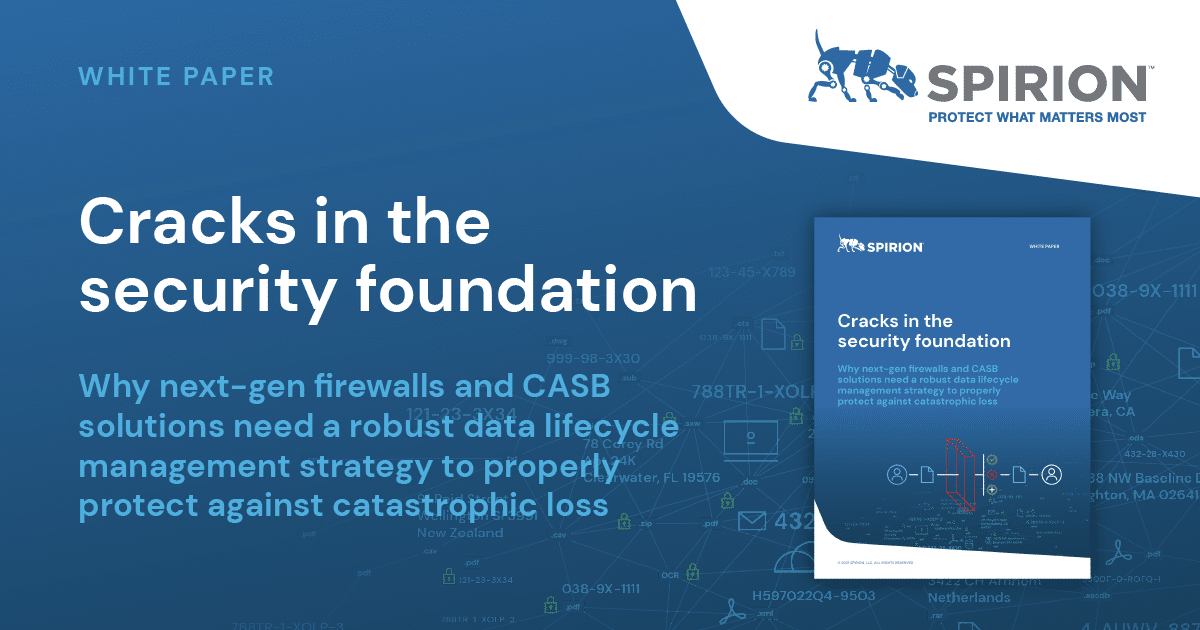Data security has taken on a whole new importance these days. As the average cost of a data breach continues to soar and the penalties — both in dollars and in damage to the brand, organizations of every stripe are ramping up their data protection efforts.
Companies large and small are spending significantly more each year on protection solutions like next-generation firewalls (NGFWs) and cloud access security brokers (CASBs), with CASB spending expected to grow by more than 20% each year through 2026. Yet, despite ramping up their spending and homing their focus in on improving their ability to protect sensitive data, many organizations are still finding that just adding new layers of technology won’t get them to where they want to be.
Instead, IT and business leaders are coming to realize that in order for these advanced technologies to properly and thoroughly protect sensitive information, they need to be supported by a more comprehensive and aggressive data lifecycle management strategy that explicitly defines and informs how these solutions are supposed to work.
When all the rage doesn’t eliminate all the risk
Next-gen firewalls and CASBs are all the rage in the data security sector these days. And for good reason. For their part, firewalls have evolved from basic network intrusion and packet detention solutions to comprehensive filters with deep packet inspection (DPI), application layer inspection and awareness, and intrusion prevention capabilities.
Similarly, CASBs have become the go-to solution for enterprises seeking a central data authentication and encryption hub to protect both cloud and on-premises environments, especially as more than 80% of enterprise workloads now run in the cloud and demand for cloud resources continues to surge in the wake of the COVID pandemic.
The continued shift away from on-premise deployments — Forrester projects that 20% of firms will switch their disaster recovery operations to public cloud for a varied part of business apps in 2021 — only increases the need and necessity for CASBs, which are now essential tools for helping protecting companies against massive fines for exposing sensitive data for a breach or sharing outside the company’s environment by either employees or machines, while also providing protection against other malware infections in multi-cloud and hybrid IT environments.
Still, despite their advanced capabilities and impressive evolution over the last several years, both next-gen firewalls and CASBs are really nothing more than components of a larger data protection methodology. And both firewalls and CASBs still leave private and sensitive data exposed because they can only work from the data privacy parameters they’re given when the underlying data management strategy is incomplete or worse, misguided.
Balanced, methodical, and strategic data protection
Data protection in the Digital Age means more than just building an impenetrable wall around an organization’s core applications and mission-critical systems. It requires a more nuanced, in-depth, and expansive data privacy lifecycle management strategy that helps companies better and more thoroughly discover, classify, and remediate governance policies for every byte of data in their environment.
While next-gen firewalls and CASBs are effective and efficient at carrying out their intended responsibilities, those actions are dictated by a higher level of data governance policies. Layering data lifecycle management solutions that can automate core lifecycle tasks — discovery, classification, and remediation — over top of NGFWs and CASBs can help inform and significantly strengthen an enterprise’s data protection scheme by:
- Proactively scanning for metadata tags and informing the firewall of what to look for as the traffic traverses the network
- Discovering or observing data types and creating rules for monitoring that data type
- Dynamically updating data intelligence in real time to ensure ongoing identification, classification, and application of governance rules across the board.
These platforms are vital for ensuring that an organization’s firewalls and CASBs are working properly to comply with ever-changing regulations, avoid costly fees, and protect against data breaches. With some solutions, like Spirion’s Sensitive Data Platform, every facet of the data lifecycle can be fully automated for maximum coverage and protection to the last inch of an enterprise IT environment.

Safe and secure to the last byte
Today’s enterprises produce and consume more data today than at any time in history. And while many organizations have invested time and resources into advanced data protection tools like firewalls and cloud access security brokers, many are finding that simply filtering traffic or scouring cloud data for vulnerabilities is no longer enough.
Employing comprehensive data lifecycle management solutions to inform, advise, and direct what and how firewalls and CASBs operate helps shine a light on potential data blindspots and eliminating unnecessary risk to the various types of unstructured sensitive data in their stores and across their networks.
Instead, enterprises should combine their existing firewall and CASB deployments with a robust data lifecycle management strategy powered by automated data discovery, classification, and remediation solutions to keep every byte of data safe, secure, and used only as instructed for maximum privacy and compliance.



